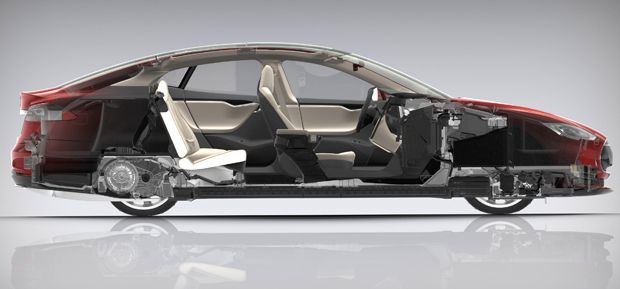Tesla's Research Budget: Spending as Fast as We Can
It takes a lot of money to learn how to cut the price of a high-tech car
Tesla Motors spent US $81.5 million on research and development in the first quarter, about half again as much as in the same period last year. That expense alone accounted for a little over half the company's $50 million operating loss.
Not that there's anything wrong with that. It costs money to make expensive technology cheap, and that's just what Tesla is laboring to do.
The Model X "will sell for around $30 000," says Bruce M. Belzowski, the director of automotive analysis at the University of Michigan's Transportation Research Institute, in Ann Arbor, Mich. "This is a $40 000 to $50 000 reduction from its Model S, so they are spending R&D dollars to try to find out how to do this."
The Model S is an all-electric sedan with eye-popping performance; the Model X will be built on the same platform but as a full-size SUV, with an extra bank of chairs to carry more people. That'll add 10 percent to the weight, which means that the main tech challenge is to keep the performance eye-popping at a much lower price.
Other tech additions include what the company calls falcon-wing doors; like gull-wing doors, they open upward, but unlike them, they meet in a hinge. Although it says it wants to swap them for cameras and in-dash displays, Tesla will have to include side-view mirrors.
The rule of thumb is that it takes anywhere from $1 billion to $3 billion to develop a major new car model. At Tesla's current R&D burn rate, it should therefore bring out a new car every three to nine years. In fact, it expects to launch the Model X a little more than a year from now—or about three years after the Model S.
"This is a company that is at the cutting edge of pure electric vehicle design," Belzowski says. "If they aren't spending large amounts of R&D money, they aren't doing what we expect them to do."
Philip E. Ross is a senior editor at IEEE Spectrum. His interests include transportation, energy storage, AI, and the economic aspects of technology. He has a master's degree in international affairs from Columbia University and another, in journalism, from the University of Michigan.
